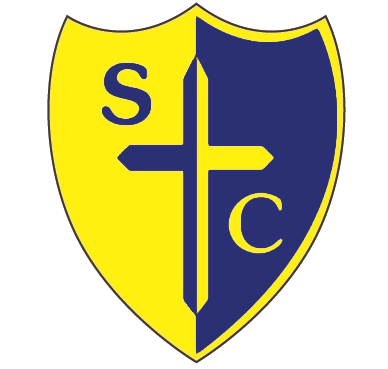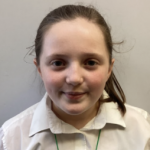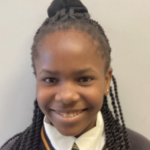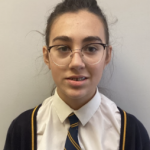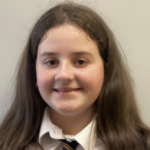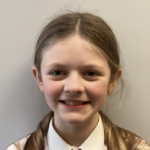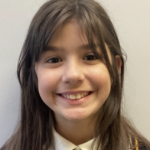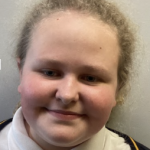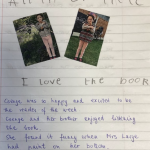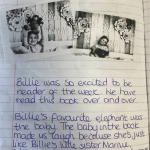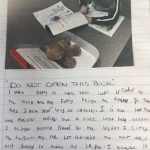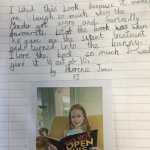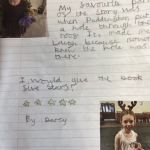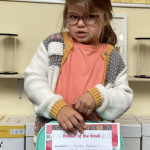How do children learn to read and write at St. Christopher’s?
In English, we intend pupils to…
- read easily, fluently and with good understanding
- develop the habit of reading widely and often, for both pleasure and information
- acquire a wide vocabulary, an understanding of grammar and knowledge of linguistic conventions for reading, writing and spoken language
- appreciate our rich and varied literary heritage
- write clearly, accurately and coherently, adapting their language and style in and for a range of contexts, purposes and audiences
- use discussion in order to learn; they should be able to elaborate and explain clearly
their understanding and ideas - be competent in the arts of speaking and listening, making formal presentations,
demonstrating to others and participating in debate.
Starting to read…
Reading at home with your child
Children are taught to read using synthetic phonics, where they learn to decode letters that make sounds – and ultimately make words. This is taught with the Twinkl Phonics scheme.
This happens because the functionality/content marked as “Google Youtube” uses cookies. In order to view this content or use this functionality, please enable cookies: click here to open your cookie preferences.
Alongside words that are phonetically decodable, children are also taught to read words which do not follow phonics rules. We call these ‘tricky’ words. Children are taught to read these words by sight.
While they are learning to read, their reading books closely match the phonics they are learning in class.
As well as learning to decode words, children are encouraged to talk about what they have read.
When they can read…
When children are able to read fluently and independently, by a combination of phonic decoding and sight recognition, children become ‘free’ readers.
Children are then free to choose books from their class library which match their current reading ability. Books are colour-banded so that children are reading books with just the right amount of challenge.
All children have a book to take home and are expected to read at home daily.
Also, the school subscribes to the “Oxford Reading Buddy” – which contains the entire library of Oxford scheme reading books. Within each ebook, there is guidance and help – and a quiz when the book has been read.
https://www.oxfordreadingbuddy.com/uk
This happens because the functionality/content marked as “Google Youtube” uses cookies. In order to view this content or use this functionality, please enable cookies: click here to open your cookie preferences.
Children read individually to an adult several times per week – either reading their own book, or reading a shared text aloud within a lesson. Priority is given to children who need the most support with reading.
Developing readers…
In class, children are introduced to more challenging texts under the guidance of their teacher – and are taught reading skills through their class texts:
- Vocabulary – learning new and unfamiliar words
- Infer – using clues in the text
- Predict – what happens next
- Explain – understanding the text
- Retrieve – skimming and scanning to find answers
- Summarise/Sequence
Children are assessed informally in lessons so that any gaps in their knowledge and skills can be addressed in subsequent lessons. They are also tested each term.
Promoting a love of reading…
Reading Ambassadors
Our Year Six ‘Reading Ambassadors’ are very excited to begin their work. We have already met and discussed some of the exciting things they would like to do to promote a love of reading across our school.
Today we introduced the ‘lunchtime book boxes’. Reading Ambassadors will be in charge of taking out the boxes every lunchtime and helping with reading on the playground. We have already had some suggestions of books to go in the boxes!
We will soon be sending information out about a Christmas fundraising initiative to raise money for some new books in school.
Ambassadors will be joining classes on their library visits and helping support reading and researching whilst at the library.
Ambassadors would like to run lunchtime books clubs plus story time sessions for KS1.
Watch this space for more updates on reading with our amazing Reading Ambassadors!
Author of the Month
Reader of the Week
Reading at home with your child
Starting to write…
While learning to read, children are also taught to form letters correctly – so that they can go on to form words. They are then taught how to form simple sentences, then how to link sentences together
In addition to phonics, children have weekly spellings to learn, which are tested each week.
Children use Spelling Shed to practice their spellings online:
https://www.spellingshed.com/en-gb/
This happens because the functionality/content marked as “Google Youtube” uses cookies. In order to view this content or use this functionality, please enable cookies: click here to open your cookie preferences.
Developing writers…
Each class studies a whole-class text – through which they learn to write in different genres. For example:
- Narrative – stories, diaries
- Newspaper reports
- Non-chronological reports
- Fact files
- Biographies
- Instructions
- Poems
Through each unit of writing, children are taught the specific skills (including vocabulary, grammar, sentence structure and punctuation) required to write accurately in a particular genre.
Children are explicitly taught to write different styles of sentence which they then practice for themselves before applying to a longer piece of writing. They are encouraged to be more independently selective of their vocabulary and sentences types as they get older and more capable writers.
They are also gradually taught how to critically edit and improve their own writing.
Adaptive teaching and Special Educational Needs (SEN)
Adaptive teaching strategies are used to ensure that all pupils can access learning and remain in the classroom as much as possible. Lessons are carefully planned and scaffolded to ensure that all pupils will be able to achieve the shared learning objective at their own level. Children with the greatest need, for example those with Special Educational Needs (SEN), will be given more in lesson support. This will include: more quality teaching and learning time with the class teacher; activities being broken down into smaller, more manageable steps; a higher level of personalised scaffolding in activities. It is our goal for all learners to be able to achieve the learning objective successfully in every lesson. Through adaptive teaching we aim to foster independence, resilience and self-confidence for every child.
- English - Year 1 on a page.pdf pdf186.5 KbMay 16th, 2024
- English - Year 2 on a page.pdf pdf208.9 KbMay 16th, 2024
- English - Year 3 on a page.pdf pdf637.6 KbMay 23rd, 2023
- English - Year 4 on a page.pdf pdf639.1 KbMay 23rd, 2023
- English - Year 5 on a page.pdf pdf643.1 KbMay 23rd, 2023
- English - Year 6 on a page.pdf pdf544.1 KbMay 23rd, 2023
- LONG TERM PLAN - ENGLISH.docx.pdf pdf48.8 KbMay 16th, 2024
- Reading Progression Map.pdf pdf145.9 KbApr 14th, 2023
- Reading Progression.pdf pdf112.0 KbSep 7th, 2023
- Writing Progression Map.pdf pdf264.6 KbApr 14th, 2023
- Writing progression.pdf pdf138.3 KbSep 7th, 2023
